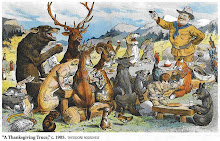Researcher still hunting cougars
Dr. Donald Linzey keeps waiting. He waits for the one photograph, the one video, the one scrap of fur that will verify the existence of cougars in Virginia or the Great Smoky Mountains of Tennessee.
So far, the elusive, massive cat eludes him, but not for a lack of effort on Linzey’s part to find it.
For more than three decades he has interviewed every person who reports a sighting to him. He developed a device made of carpet and nails that he attaches to trees to gather fur from animals that rub up against the trees. Then, he sends the fur off for DNA analysis. He has installed motion-detector cameras at various sites. He even trained his dog to track down cougar scat.
Linzey spoke to a packed house Monday about his research. His presentation was the first in an academic lecture series presented by Wytheville Community College as part of its 50th anniversary celebration.
The cougar, which is also known by other names like mountain lion and catamount, is an agile, slender cat that is brownish-yellow in color with black markings in the facial area. One of its most distinctive characteristics is its long tail, which curls at the end and drags the ground.
People often mistake bobcats for cougars, Linzey said, although a bobcat has rough fur around its face, and a short, bobbed tail.
Cougars are relatively common out west. There is also a small population in southern Florida. Out west, they roam hundreds of miles; they have the largest range of any animal in the Americas. Two years ago, wildlife officials concluded that a cougar killed by a car in Connecticut was from the Black Hills of South Dakota 1,500 miles away.
If there are cougars in this area, chances are they do not roam nearly as far, the WCC professor said. Deer is a cougar’s main food source; they eat an average of one per week. Because deer are so plentiful here, it is not necessary for a cougar to roam very far, maybe 25 square miles.
The fact that they do not have to wander far for food is one of the reasons cougars remain so elusive in this area. In addition, they are most active at dawn and dusk, when less people are out, and they are shy by nature.
The last verified sighting in Virginia was in 1882, in Abingdon, Linzey said. The last sighting in the Great Smoky Mountains was in 1920 and in West Virginia, 1887.
But that does not mean they are not in the area. Many hunters and outdoorsmen have a cougar story to tell. The problem is they don’t have any proof.
“Most of the time, when people see an animal, it’s a fleeting glimpse and there’s not enough time to pull out a camera,” Linzey said.
When someone reports a sighting to him, Linzey interviews the person about exactly what he or she saw. He also inquires to see if anyone else was with the person, what the weather was like and what the animal was doing.
“Then I render a subjective opinion about whether or not it could have been a cougar,” Linzey said.
About 44 percent of the sightings are good enough for Linzey to pinpoint them on his Virginia map. Of that 44 percent, about 40 percent were confirmed by more than one observer.
On the map, there is one pin in Bland County and two in Pulaski County. There are no pins in Wythe County. Montgomery County has two strong sightings: one by a Virginia Tech professor and a second by a man and his son who watched a cougar for five minutes.
In Smyth County, a farmer shot and killed a deer at dusk and left it in the woods until the next morning. When he returned, the deer was gone. It had been dragged about 45 feet and was covered with leaves and debris, which is what cougars do with their prey. When they have had their fill, they cover the animal and return later to eat more.
Linzey sent fur sample from the site for analysis, but no cougar fur was identified, only deer fur.
“What could drag a deer that far?” Linzey asked. “I think it was a cougar, but there is no positive proof.”
Again.
Linzey has a photo of a young deer hanging from a high tree branch. He thinks a cougar drug it there, but there’s no proof.
Again.
The photos he has of cougars are hazy and sketchy at best. In the ones where the cougar is clear, there are problems: vegetation around it cannot be verified to be growing where the photographer claimed to have taken the photo, or the angle of the photograph cannot be verified. Other photos are too blurry for concrete identification.
Again.
But a lack of proof does not deter Linzey, who continues to hunt his mysterious cat.
“You have to make up your own mind about whether we have cougars out there,” Linzey said. “We need more eyes and ears out there. Then, there’s a better chance of finding a cougar.”
The existence of cougars must be verified so they can be protected, he said.
To report a cougar sighting, contact Linzey at 276-223-4824 or wclinzd@wcc.vccs.edu










2 comments:
There's probably only one 'device' that is so good at detecting pumas that few are willing to look at it as a search option: another puma. Makes me wonder if even the male shot in Georgia several years ago wasn't on the scent of an upriver captive female (or even somebody's civetone?). I'd like to believe there are more out there, but the evidence is pretty thin.
You and me both Mark............perhaps one day it shall be
Post a Comment